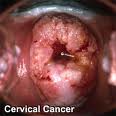In pre-cancerous stage, cervical cancer generally takes as long as ten years, and may even take thirty years to develop into a full fledged malignancy.
Starting out as an abnormality in cervical cells, it is detectable through screening tests that are painless, quick and affordable
Cervical cancer is highly curable at its pre malignant stage, if every woman who is at risk of developing the disease would subject herself to periodic screening tests.
There is a good chance and the opportunity to detect and stop the disease before it becomes fatal or most costly to treat.
Early detection and treatment is the key to preventing cervical cancer. Developing countries that applied this concept by means of a sustained national anti cervical cancer screening program in place have greatly benefited.
The incidence of cervical cancer in those countries has been reduced by as much as ninety percent and the number of deaths due to cervical cancer has decreased by seventy percent according to the Cervical Cancer Prevention Network Alliance (CECAP), an organization established in response to the need for a coordinating body to spearhead promotions of a new approach towards early detection and treatment of cervical cancer.
Cervical cancer is likely to affect women who: 1) Have warts of the high risk human papillona virus types (HPV) in the anal and genital areas. 2) Started having sex soon after she began her first menstruation. 3) Have or had several sexual partners. 4) With a history of sexually transmitted diseases. 5) A previous or current smoker, or is regularly exposed to secondary smoke. 6) Used diethylstilbestrol (DES), a drug for preventing miscarriage of pregnancy, or her mother used it when pregnant with her. 7) Have five or more children. 8.) Belong in the low socio-economic class. 9) And have compromised immune status or poor resistance to diseases.
Human papillona virus (HPV) is a very common infection; though most infected individuals eliminate evidence of the virus without even developing clinically recognized manifestations. Thus, very few HPV infected individuals progress to invasive cervical cancer.
Avoiding or minimizing sexual contact should help to protect against HPV infection and development of cervical cancer. Sexually abstinent groups have very low incidence of cervical cancer.
With all the current approaches to prevention of HPV infections, vaccination should be a primary prevention tool, integrated with existing screening programs for early detection. With sufficient women awareness, cervical cancer can now be prevented and treated if diagnosed early.
